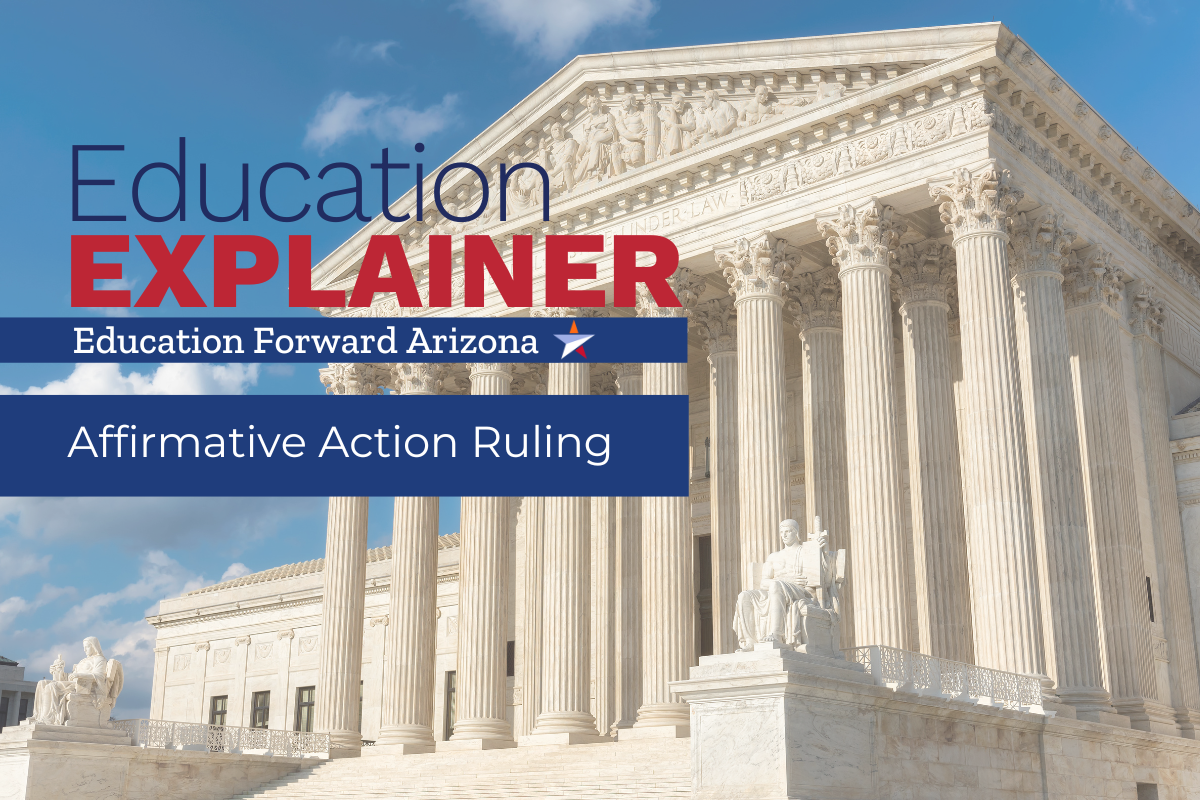
What is Affirmative Action and What Does it Mean for Arizona Students?
What is Affirmative Action?
The phrase “affirmative action” was first used in the early 1960s by President Lyndon B. Johnson’s administration. The purpose was to improve opportunities for African Americans while efforts were being made to create civil rights legislation that would reverse laws that allowed for discrimination. Affirmative action policies were first enacted under the landmark Civil Rights Act of 1964 and later expanded to include Hispanics, Native Americans, and women. The policies were also expanded to include colleges, universities, state and federal agencies.
University admission policies have been challenged since the 1970s, both in the courts and by state legislatures. The biggest change was the ruling that the use of racial quotas, to ensure a diverse student body population, was no longer constitutional; Regents of the University of California v. Bakke (1978). However, universities were allowed to continue to use race as one of many factors to ensure a diverse student body. Currently, there are eight states, including Arizona, that do not allow the use of race to be used as a preference in admission decisions.
To be clear, hardworking and talented Latino, Black, and Native American students had to meet the rigorous criteria of the university admissions requirements. Once it was determined that the applicants met rigorous standards, students were selected from this qualified pool, and the student’s race was allowed to be used for an admission decision.
However, on June 29, 2023, the decision by the Supreme Court reversed earlier decisions, and race can no longer be used as one of many factors when admitting students to institutions of learning. These factors include specific grade point averages, standardized test scores, essays, and other criteria.
The goal of affirmative action was to advance diversity and increase the culture of participation, and it has supported colleges and universities in recognizing that a diverse student body has a positive effect on all students. The benefits of a diverse pool of students are essential for developing cross-cultural understanding in a global working environment.
What Affirmative Action is not
There are many misconceptions about affirmative action and how it is used by institutions of higher education across the country. Here are some common misconceptions:
- Affirmative Action allows unqualified students to be admitted in place of qualified students.
- To be clear, affirmative action does not mean that Latino, Black, or Indigenous students, who do not meet the rigorous college admission standards, are given preference to a student who does meet the rigorous standards.
- Institutions use “racial quotas” when admitting students.
- The use of quotas was deemed unconstitutional in the landmark Supreme Court Case, Regents of the University of California v. Bakke, in 1978.
- Affirmative action is used by most colleges and universities.
- The truth is that only the most selective and highly competitive institutions use race as a factor when admitting students. A study published by the Pew Institution in 2019 found that approximately 3.4% of all four-year institutions, the most elite institutions, use affirmative action to ensure a diverse student population.
What Does This Mean for Arizona Students?
Arizona students who plan to attend one of the state’s many community colleges or state universities will not feel the effects of this ruling.
Community colleges are open access institutions, meaning that all students who meet the requirements are admitted, and the three state universities have admission requirements based solely on academic performance, including high school grade point average, ranking in high school graduating class and specific standardized test scores.
The decision to remove race as a factor in college admission could, however, impact Hispanic, African American, and Native American students who planned to attend an elite out-of-state university that had used affirmative action in their admissions practices, including Harvard, the University of North Carolina, Yale University, Brown University, Columbia University, the University of Pennsylvania, the University of Chicago and Dartmouth College and others.
References:
www.britannica.com/topic/affirmative-action
www.msn.com/en-us/news/us/a-lot-of-what-youve-heard-about-affirmative-action-is-wrong/ar-AA1dd6H5
www.pewresearch.org/short-reads/2019/04/09/a-majority-of-u-s-colleges-admit-most-students-who-apply/
